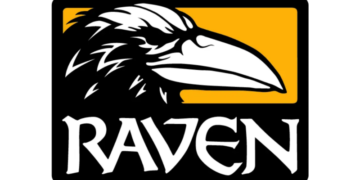Law has an impact on everything. It impacts where we can go, it impacts what we can do, it impacts what appears in our stores, and even impacts what products are made and how it is produced. All of this, one can easily imagine, can have significant effects on our digital technology, but in the last thirty years, a new set of laws has impacted our technology in ways that are far more widespread than everything that has come before. How, you ask? Well, let’s take a brief look at the last thirty years of Digital Law.
A Small Disclaimer
This will only be a brief introduction to the topic. Although thirty years ago this field was small and could easily be covered in a relatively small article such as this, it has expanded so rapidly that today entire specialised legal teams are required to deal with both legal practices and to predict the potential ramifications of new laws or a lack of change. The digital sphere is the fastest-paced and fastest-evolving field in both technology and law today, and if this interests you, we must recommend trying a master of laws online for more depth than we can offer here. But, with that disclaimer out of the way, let’s move on with the history of digital law’s impact on technology!
A Brief Introduction
Digital law, like many laws, began as a response to a problem. As new technologies were invented, new protections were required, but as new laws are often fundamentally responsive, this process was slow. As one might expect, one of the first areas that needed to be protected was the realm of content creation and ownership.
As the internet came into being, copyright law and intellectual property laws needed to be quickly expanded to include this space as a medium. Primarily this was to protect large corporate industries whose work could easily be uploaded and distributed to a wide audience who had either never paid for the content or for whom these works were never intended.
This led to a variety of sophisticated ways to protect data, ranging from the invention of region-locking technologies to the creation of physical keys designed to only accept data if the disc contained a specific shape. Many of these technological and digital developments were the product of the World Intellectual Property Office (WIPO) which offered worldwide and effective responses to issues of trademark and copyright, but as the internet expanded these matters quickly became greater and greater issues.
It seems obvious that copying and sharing a copy of someone else’s work should be illegal, but what about backups and digital storage? If a person buys a piece of music, should they be allowed to make and retain a copy on their computer in case their original gets stolen or damaged? What about transferring data from one computer to another? Should it be legal for a person who bought a new computer to transfer all data from one PC to another, including such copyrighted materials? What happens then if the old computer is then gifted to a third party with data intact – conversely, could one person provide legitimate backup services to others as a way to protect data? These may seem like they have simple solutions, but really think about it, where should be line be drawn, and then consider, how could someone work around these issues for theft or profit?
Today we have cloud services where large companies are able to store backups of our own (sometimes copyrighted) data. Across the film, music and video game industries (for example Netflix, Apple Music, and Steam), many companies have begun selling digital copies of their content, but they can only be accessed via their own platform. But as many of us know from personal experience, if the company collapses or a provider decides to retract certain paid-for content, the users lose the content regardless of what they’ve paid.
So, who really owns that content? Can you make a copy of something that you’ve legally purchased if it can only be accessed on a platform owned by one of these large companies? Even if you have the legal right, how can you exercise them when access is controlled by another? What about the issue of password sharing? Should you be allowed to give the details of your personal, paid-for account to someone else? In a digital age where in theory everyone could access the content if they simply had the password, should there be a limit on how many people can access content using the same access point? As more and more cases develop new laws need to be developed for greater protection – but who is being protected here? Is it the user? The companies? Or is it the content itself?
Going Beyond Digital Copyright
This has just been a small slice of digital law and already you can see how complex it can be. In all situations, there are at least three parties that need protection – sometimes more – and navigating that treacherous abyss becomes a problem when the abyss grows wider with every new digital development. We haven’t even begun to talk about the issue of illegal downloading, cyber-attacks, hardware limitations, monopoly rights, right-to-repair laws and 3D printing. In every situation, law and the enforcement of that law is often the only way to achieve reasonable protection or to recover from harm. But hopefully, this article has given you a small slice of insight and helped you think about the answers for yourself.










































